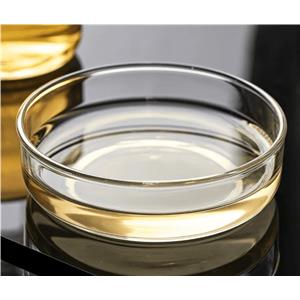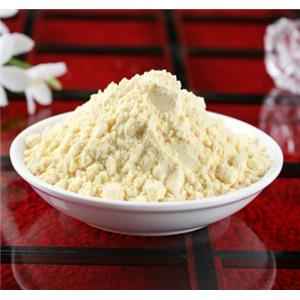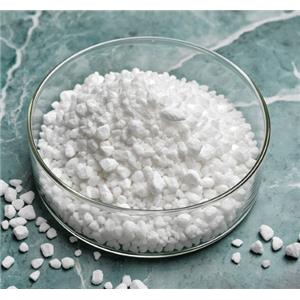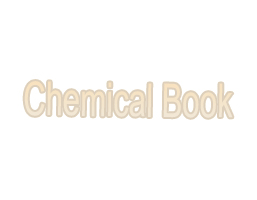
4-Aminopyrimidine NEW
| Price | Get Latest Price |
| Package | 200kg |
| Min. Order: | 200kg |
| Supply Ability: | 20 tons |
| Update Time: | 2025-04-09 |
Product Details
| Product Name: 4-Aminopyrimidine | CAS No.: 591-54-8 |
| Min. Order: 200kg | Purity: ≥99% |
| Supply Ability: 20 tons | Release date: 2025/04/09 |
4-Aminopyrimidine (CAS No. 591-54-8) – Technical Analysis and Industrial Applications of a Core Pyrimidine Intermediate
I. Basic Information and Physicochemical Properties
Basic Chemical Information
English Name: 4-Aminopyrimidine
CAS No.: 591-54-8
Molecular Formula:
Molecular Weight: 95.10
Appearance: White to off-white crystalline powder, odorless, bitter taste.
Physicochemical Properties
Basicity: The amino group (-NH?) exhibits weak basicity (pKa ≈ 4.8) and forms salts with HCl, H?SO?, etc. (e.g., 4-aminopyrimidine hydrochloride).
Reactivity: The amino group at position 4 undergoes acylation and alkylation; nitrogen atoms in the pyrimidine ring participate in coordination chemistry.
Stability: Stable at room temperature; decomposes under high heat or strong acidity.
Slightly soluble in cold water (1.2 g/100 mL, 25°C).
Freely soluble in hot water, methanol, ethanol, and dilute acids; soluble in pyridine; insoluble in ether.
Melting Point: 200–202°C (decomposes)
Boiling Point: 341°C (atmospheric pressure)
Density: 1.32 g/cm3
Solubility:
Chemical Characteristics:
II. Upstream and Downstream Industrial Chain Analysis
Upstream Raw Materials and Synthesis Process
4-Hydroxypyrimidine (CAS: 4895-89-2)
Ammonia solution (NH?·H?O) or liquid ammonia.
Core Raw Materials:
Mainstream Synthesis Route:
Ammonolysis Method:
4-Hydroxypyrimidine reacts with excess ammonia in a high-pressure reactor, catalyzed by copper salts (e.g., CuCl?), at 180–200°C and 5–8 MPa for 12–16 hours. After acidification, neutralization, and crystallization, 4-aminopyrimidine with ≥99% purity is obtained (yield: 75–80%).
Reaction Equation:Downstream Products and Derivatives
Ligand for metal-organic frameworks (MOFs).
Synthesis of fluorescent probes and biodetection reagents (e.g., DNA base analogs).
Synthesis of pyrimidine-based fungicides (e.g., cyprodinil, pyrimethanil), herbicides (e.g., orthosulfamuron).
Production of insect growth regulators (e.g., chitin synthesis inhibitor intermediates).
Synthesis of antimalarials (e.g., pyrimethamine), antivirals (e.g., lamivudine precursors), anticancer drugs (e.g., pyrimidine-based DNA synthesis inhibitors).
Production of novel immunomodulators (e.g., JAK kinase inhibitor intermediates).
Pharmaceutical Intermediates:
Pesticide Intermediates:
Materials and Fine Chemicals:
III. Core Application Fields
Pharmaceutical R&D and Drug Synthesis
Antimalarial Key Intermediate:
Condensation with 2,4-dichlorobenzaldehyde yields pyrimethamine, a frontline antimalarial drug that inhibits Plasmodium dihydrofolate reductase, blocking nucleic acid synthesis.Antiviral Drug Precursor:
Reacts with ribonucleosides to produce nucleoside analogs (e.g., lamivudine intermediates) for anti-HIV/HBV drugs, competitively inhibiting viral reverse transcriptase.Anticancer Drug Synthesis:
Serves as a pyrimidine ring scaffold in 5-fluorouracil (5-FU) derivatives, interfering with DNA replication to inhibit tumor cell proliferation (used in breast and gastrointestinal cancers).Pesticide Innovation and Plant Protection
High-Efficiency Fungicide Intermediate:
Reacts with cyclohexanone to form cyprodinil, effective against Botrytis cinerea and Venturia inaequalis (efficacy >90%), with systemic and curative actions.Sulfonylurea Herbicide Key Raw Material:
Condenses with sulfonamides to produce orthosulfamuron, selectively controlling annual weeds in rice fields with crop safety.Materials Science and Fine Chemicals
MOFs Ligand:
Nitrogen atoms coordinate with metal ions (e.g., Zn2?, Cu2?) to form high-surface-area MOFs for gas adsorption (e.g., CO? capture) and catalysis.Biodetection Reagents:
Modified with fluorophores (e.g., FITC) to create base analog probes for DNA/RNA sequence-specific detection (nanomolar sensitivity).
IV. Technical Advantages and Market Dynamics
Technical Barriers:
High-pressure ammonolysis requires precise control of catalyst dosage and temperature. Continuous flow reactors reduce reaction time to 4 hours, increasing yield to >85%.Production Capacity:
Global annual capacity ≈150 tons (China: 60%), mainly produced by Jiangsu Lianhua Technology, Shandong Yu’ang Chemical, etc., via ammonolysis.Market Demand:
Driven by antimalarials, novel pesticides, and innovative drug R&D, demand grew 18% YoY in 2024. The 2025 market is projected to exceed CNY 30 million, with pharmaceuticals accounting for 65%.
V. Safety and Storage Recommendations
Hazards:
Inhalation of dust may cause respiratory irritation; skin contact requires immediate washing. Rat oral LD50 >2000 mg/kg (low toxicity).Storage Conditions:
Store in airtight containers in a cool, dry place (≤25°C), protected from light, moisture, oxidants, and strong acids. Recommended packaging: polyethylene bags or cardboard drums.



Company Profile Introduction
You may like
Recommended supplier
| Product name | Price | Suppliers | Update time | |
|---|---|---|---|---|
| $1.10/1g |
VIP4Y
|
Dideu Industries Group Limited
|
2021-12-10 | |
| $15.00/1KG |
Zhuozhou Wenxi import and Export Co., Ltd
|
2021-07-10 | ||
| $1.00/1KG |
VIP6Y
|
Career Henan Chemical Co
|
2019-12-30 | |
| $15.00/1KG |
Zhuozhou Wenxi import and Export Co., Ltd
|
2021-07-08 |









 China
China